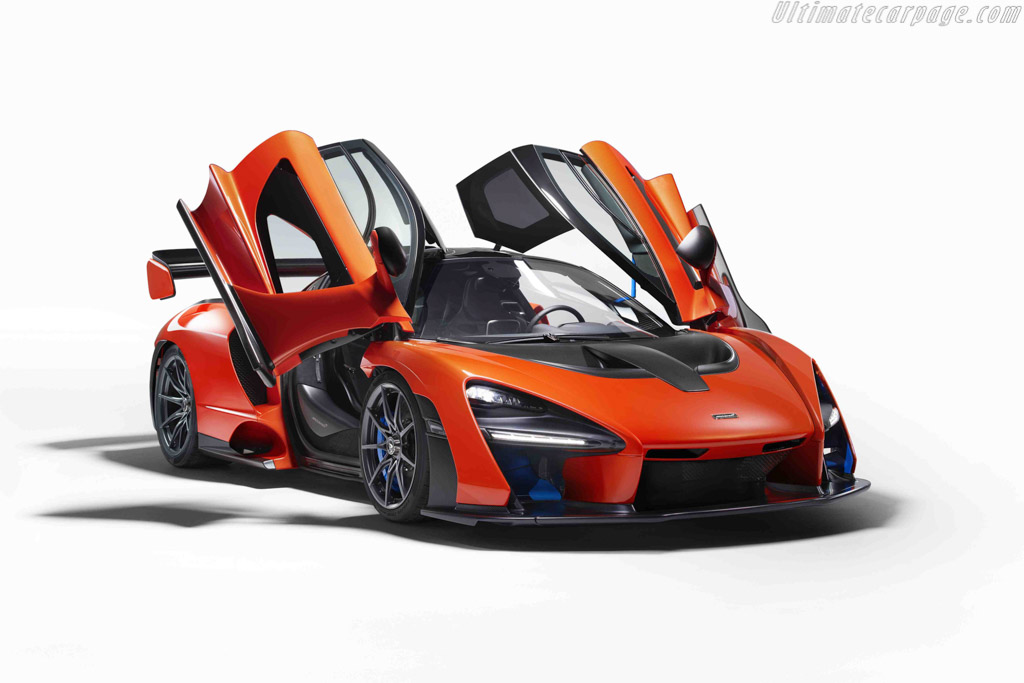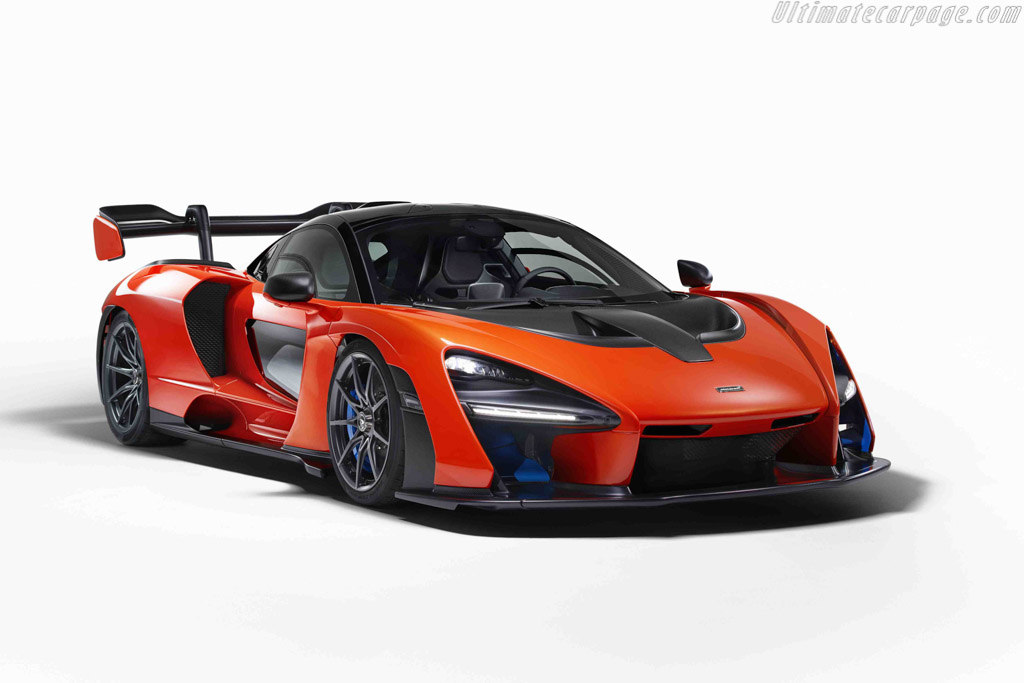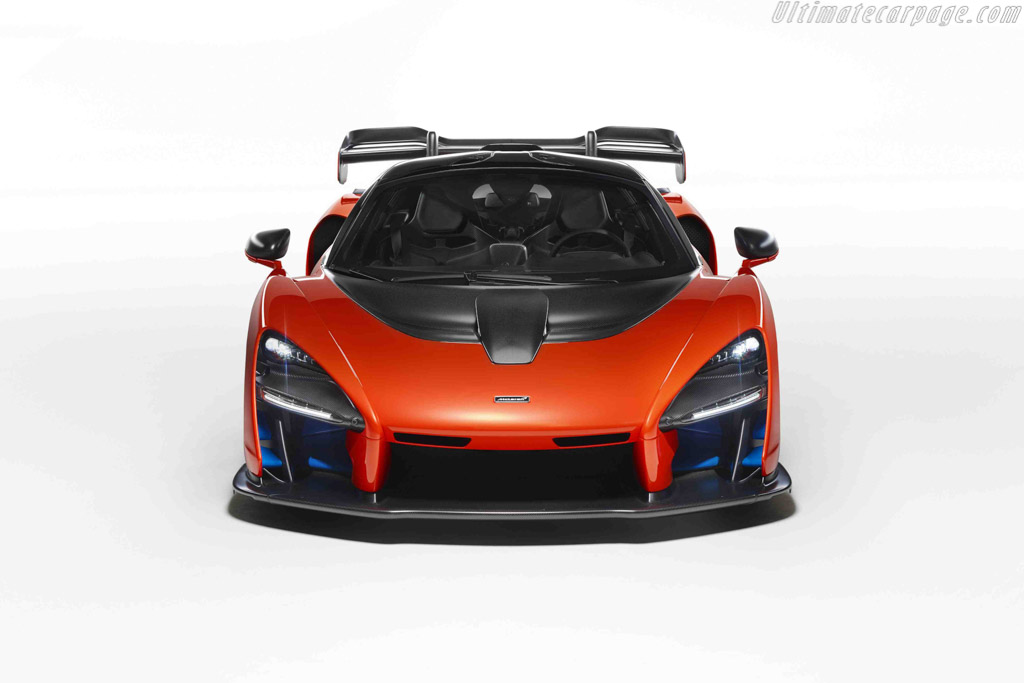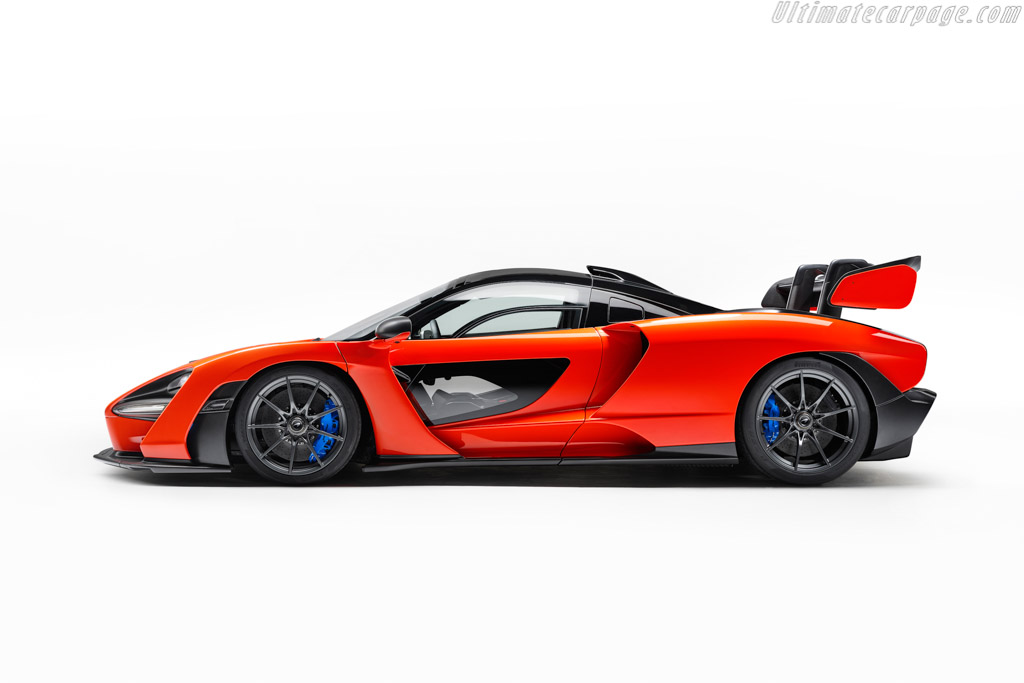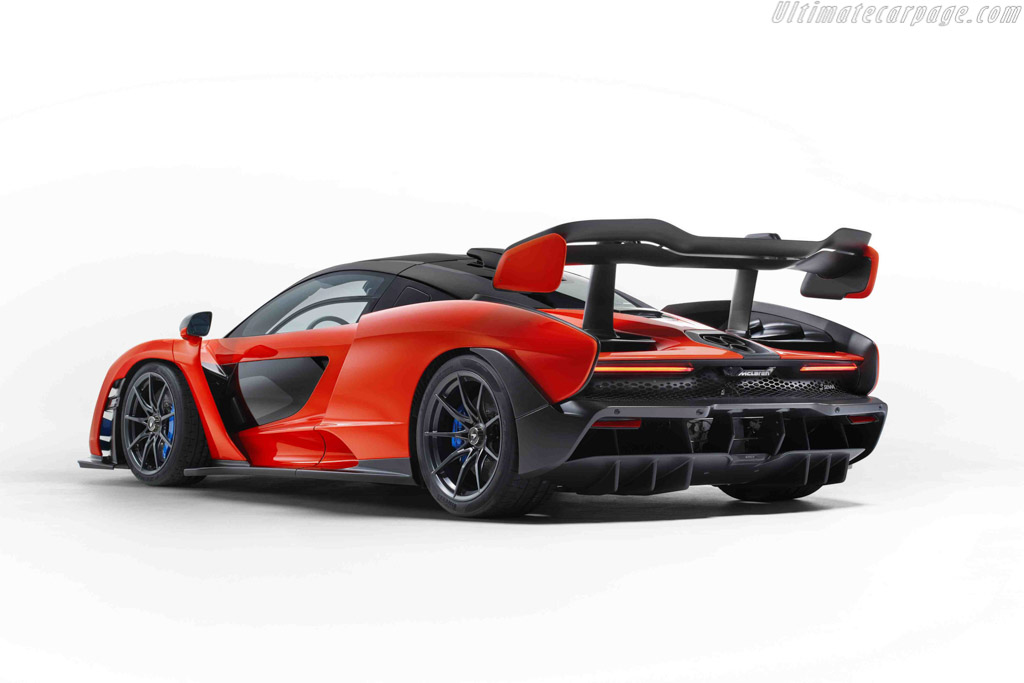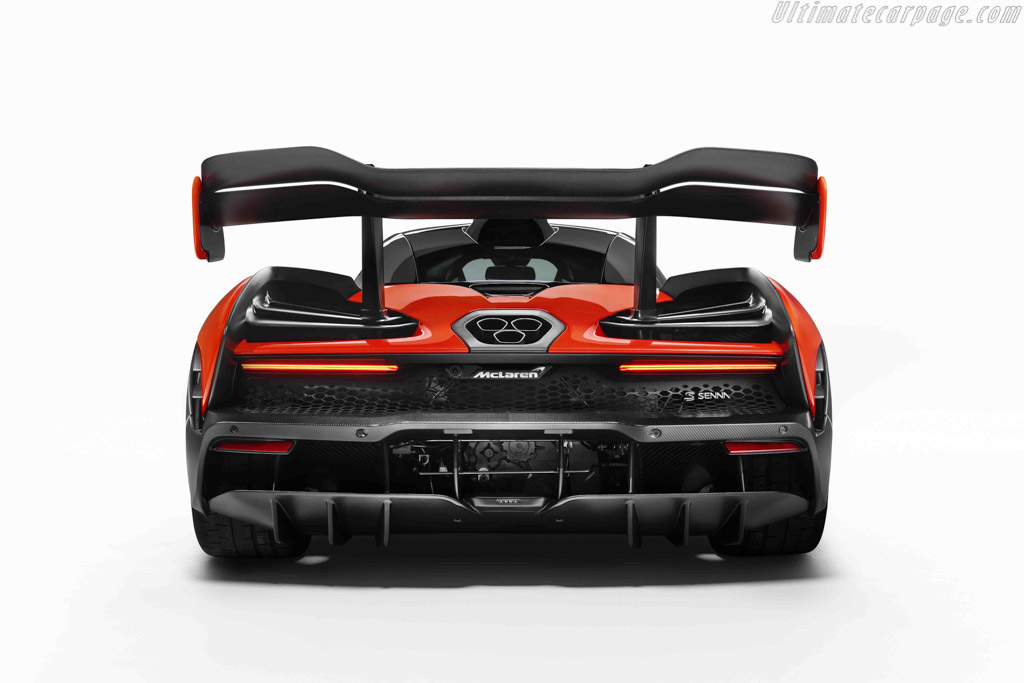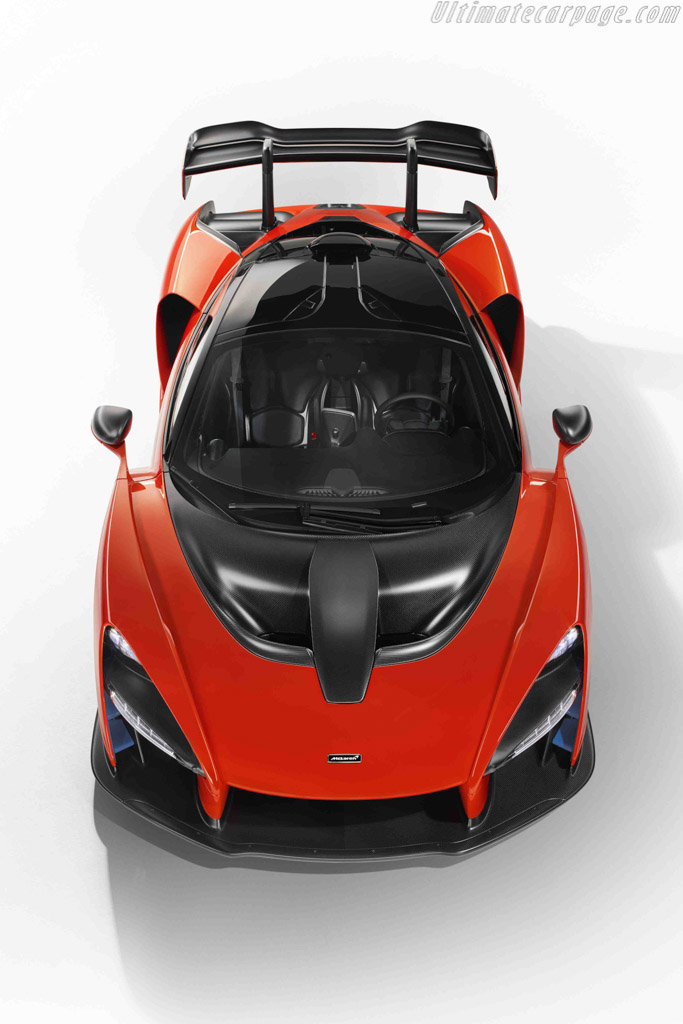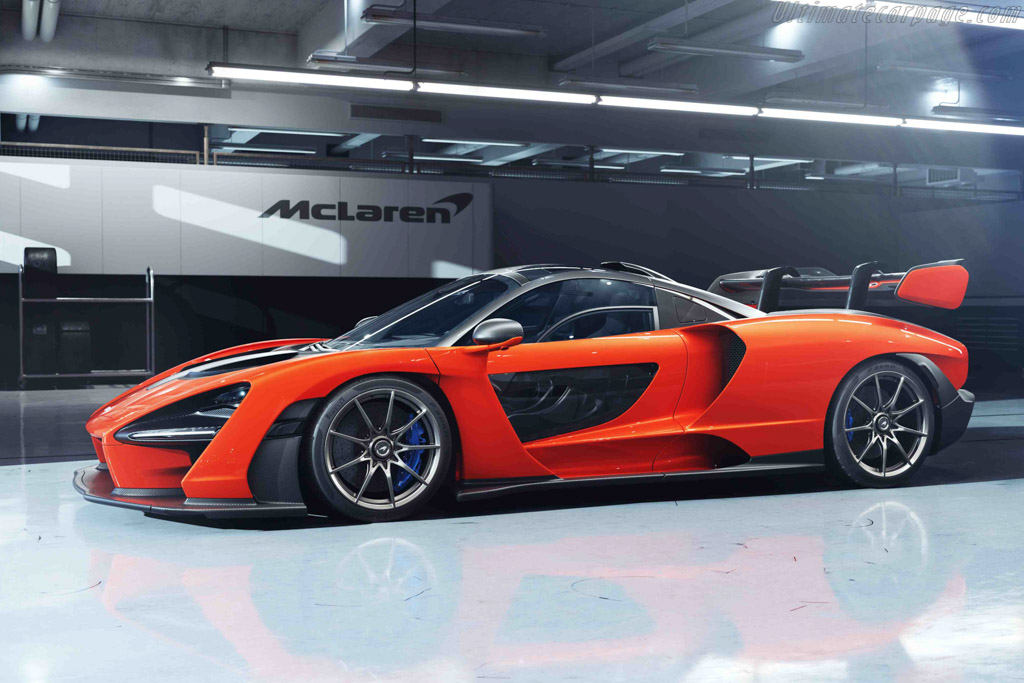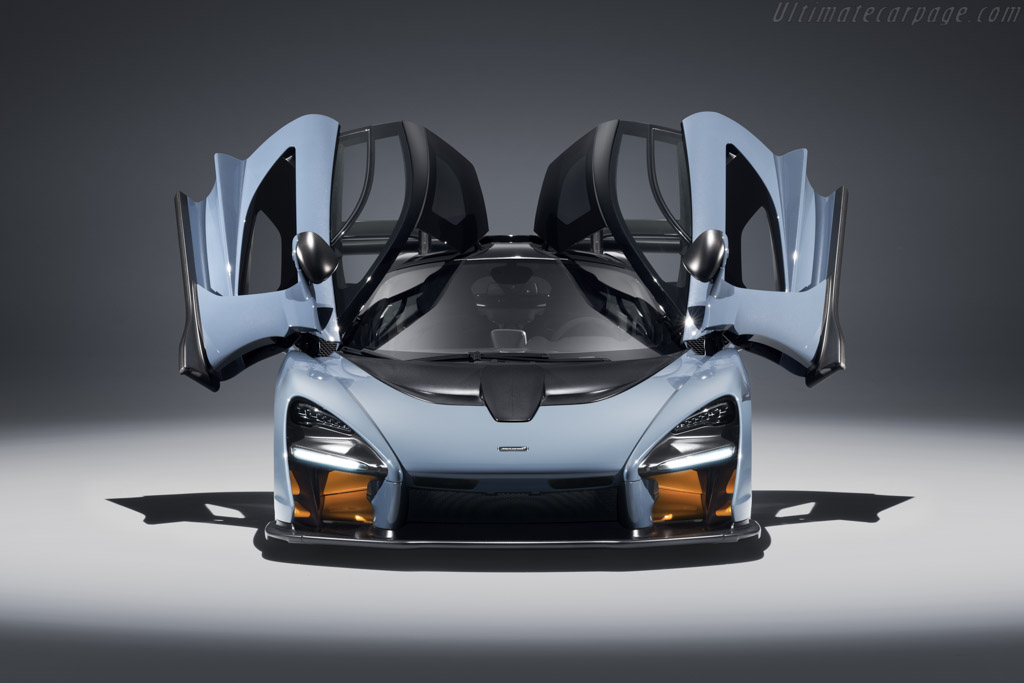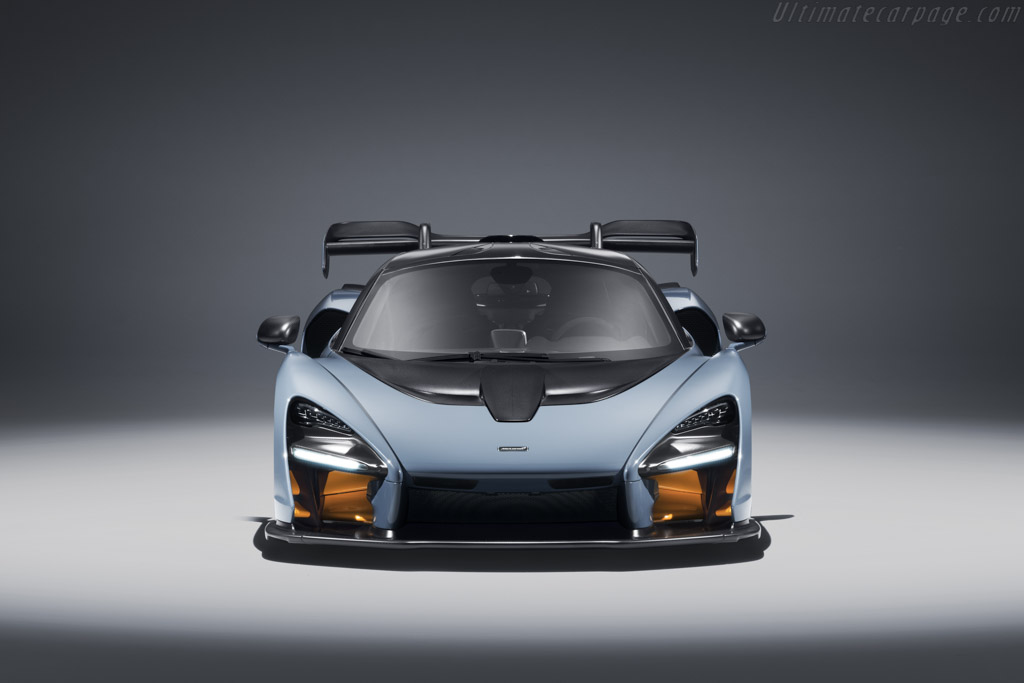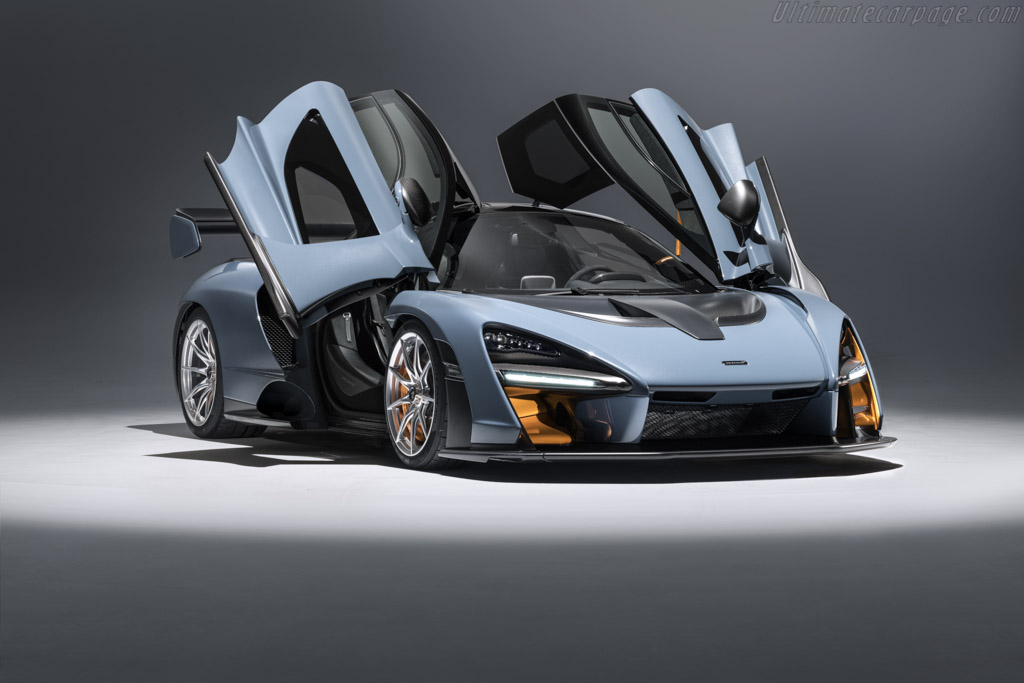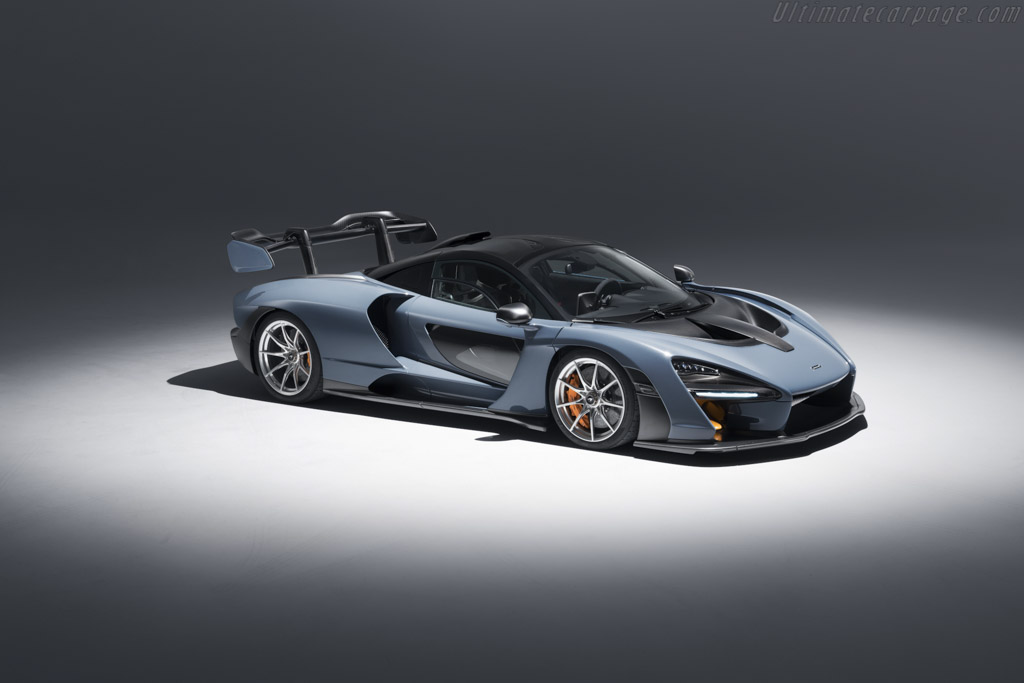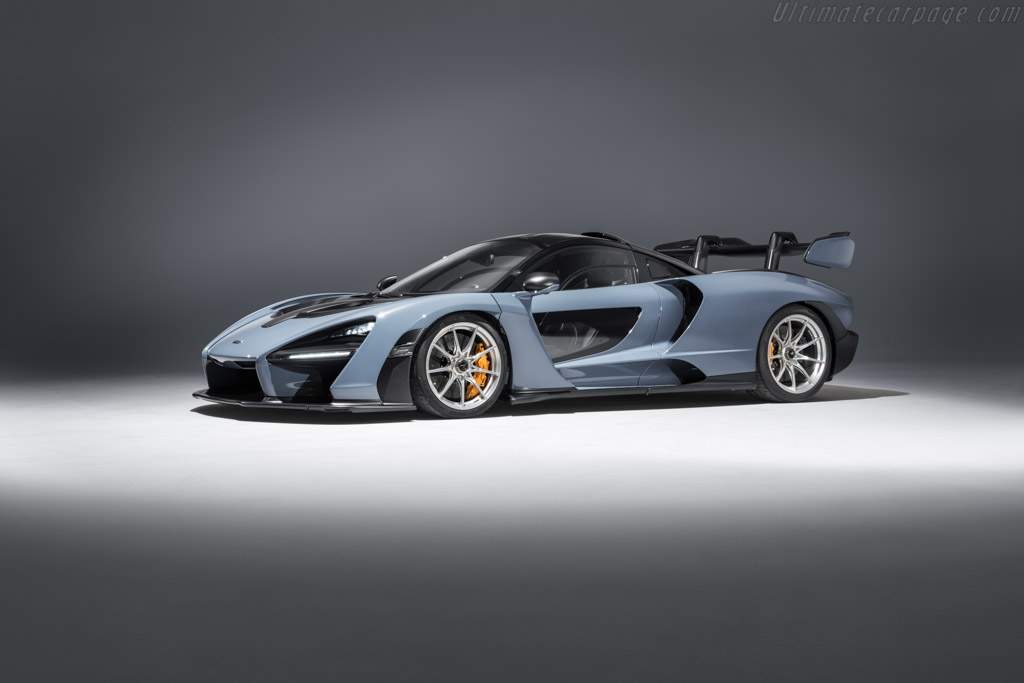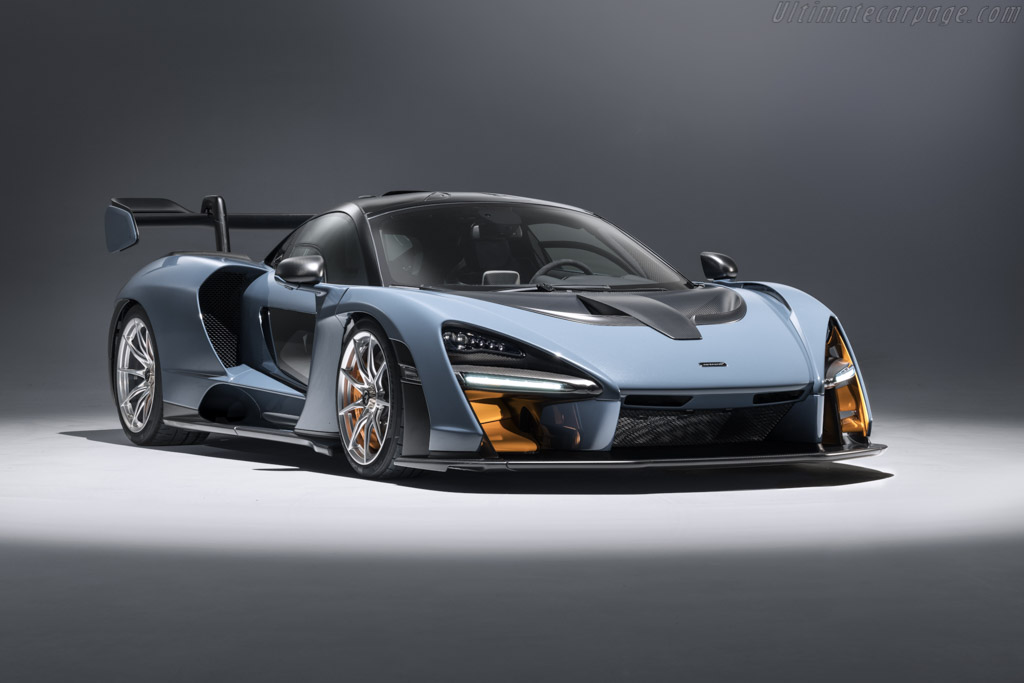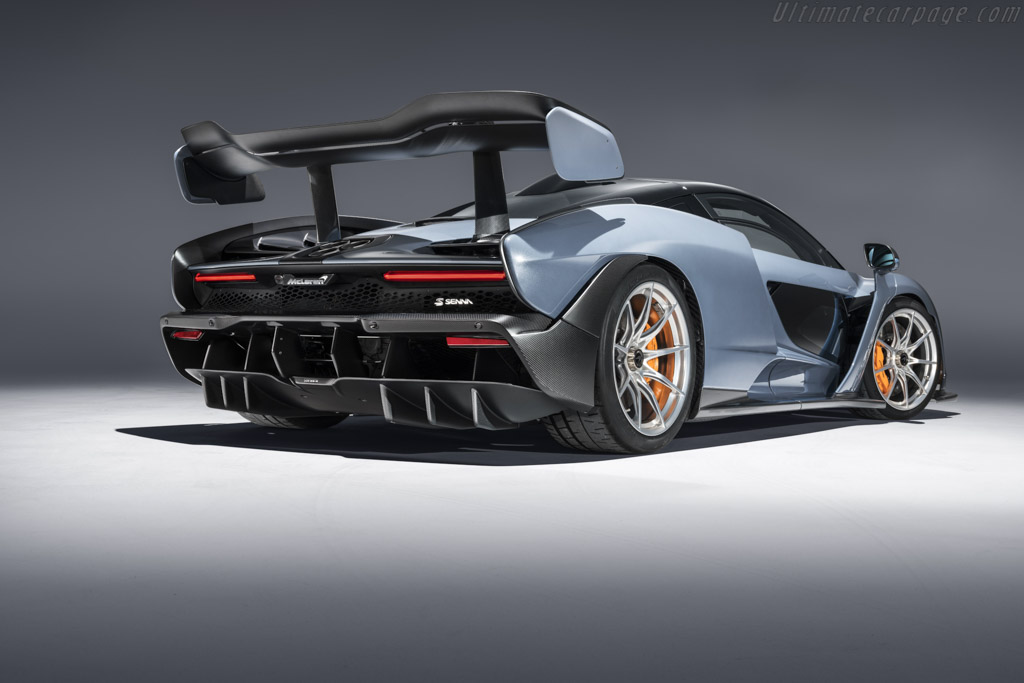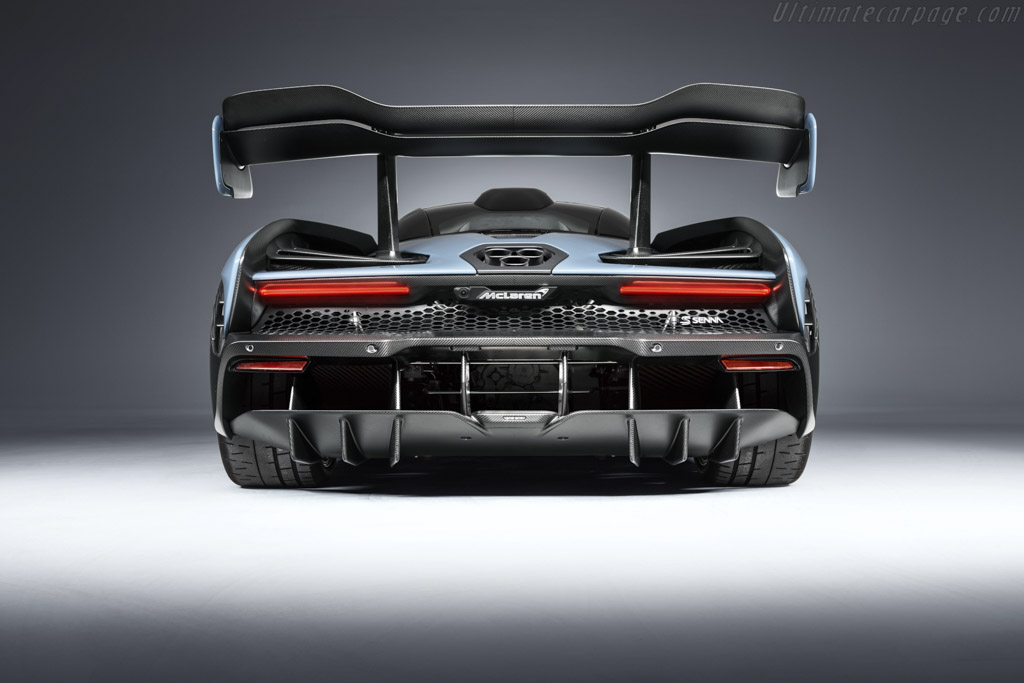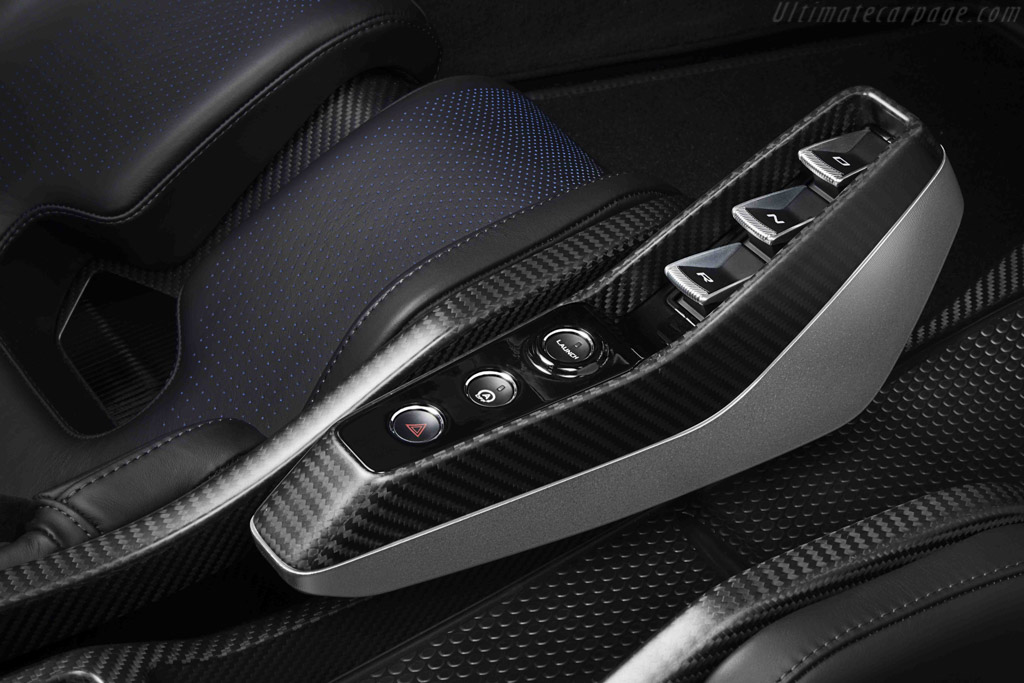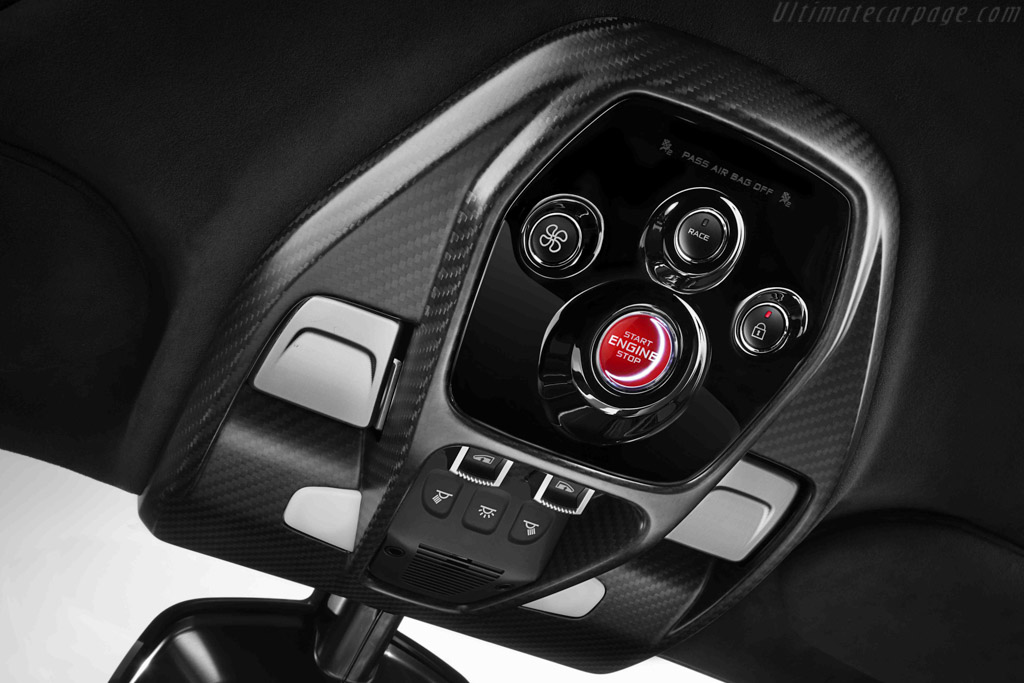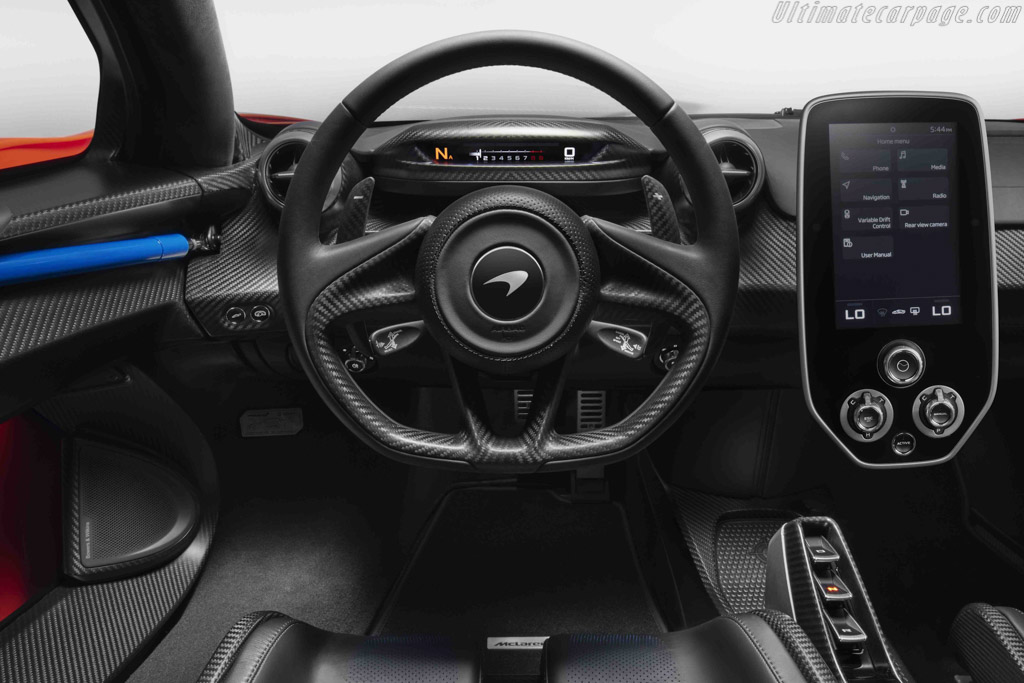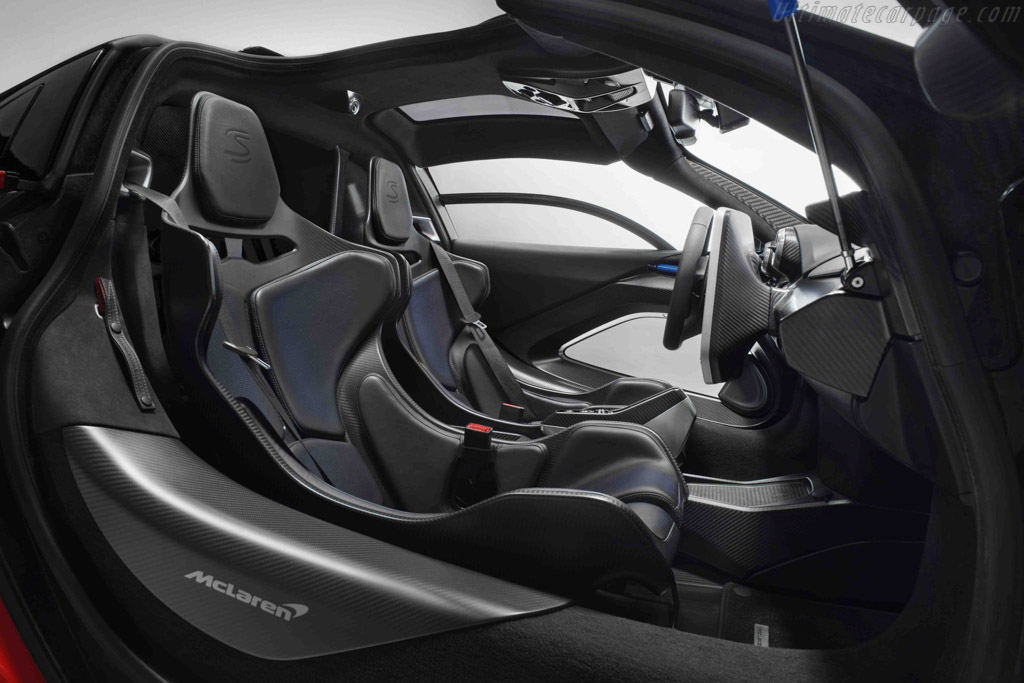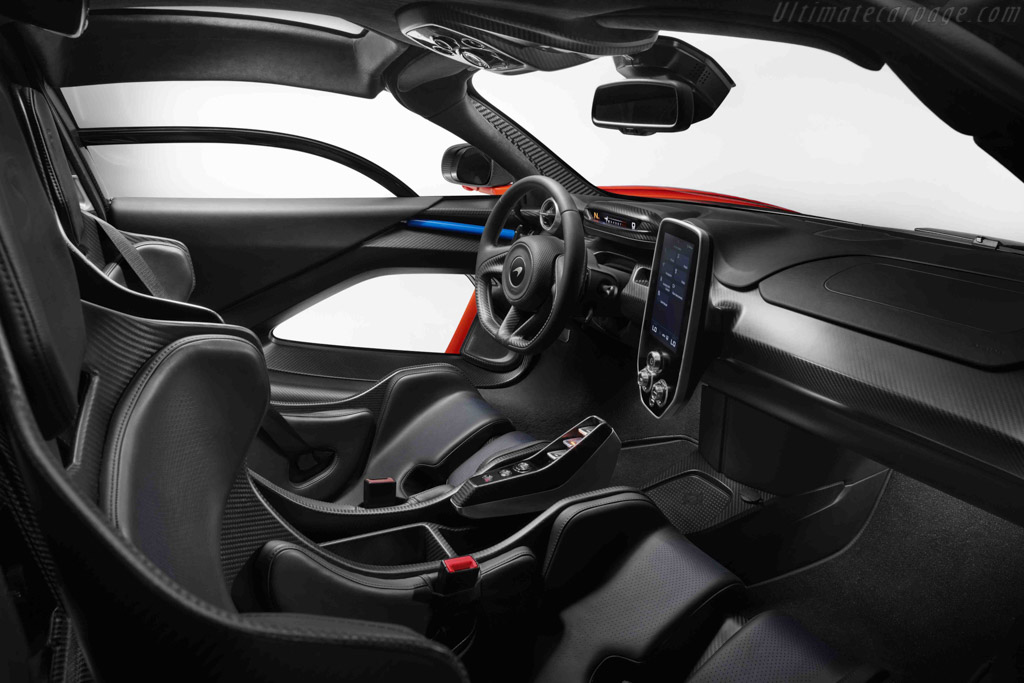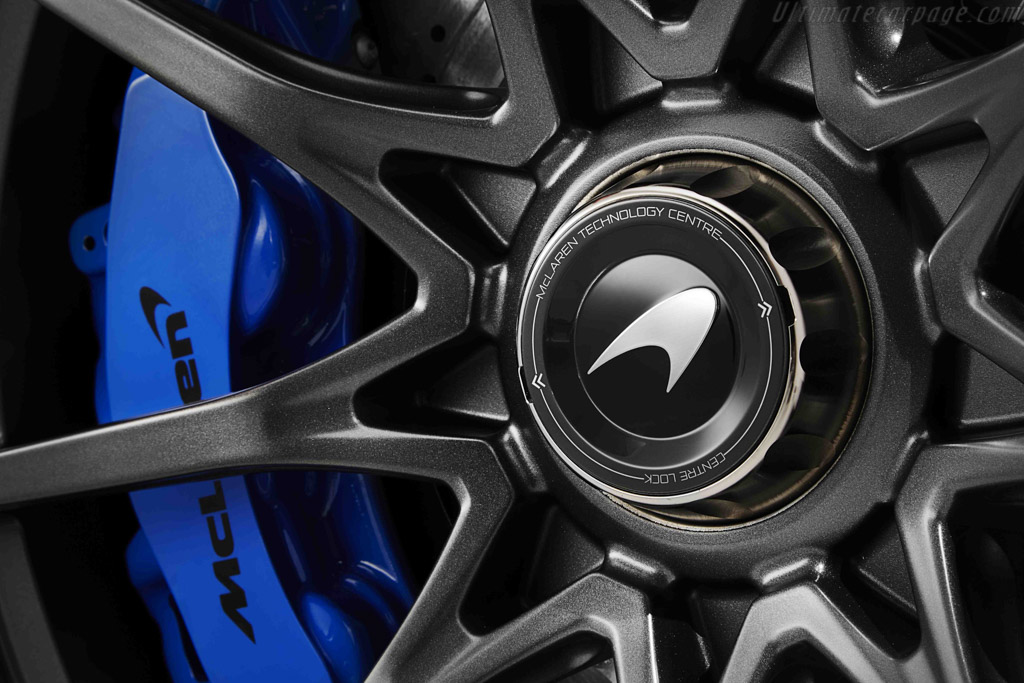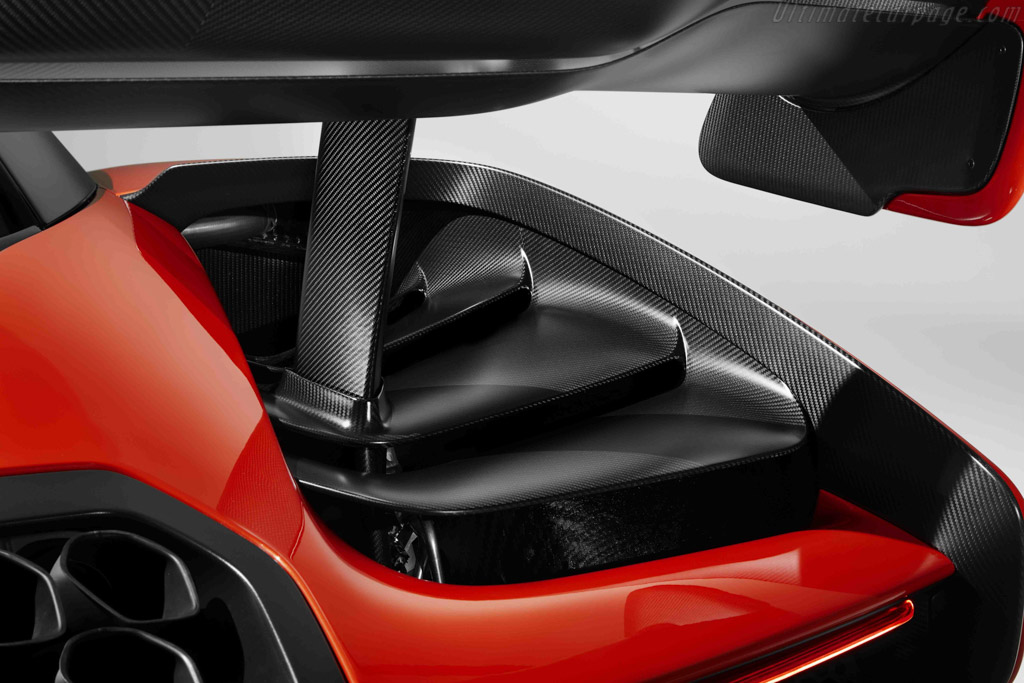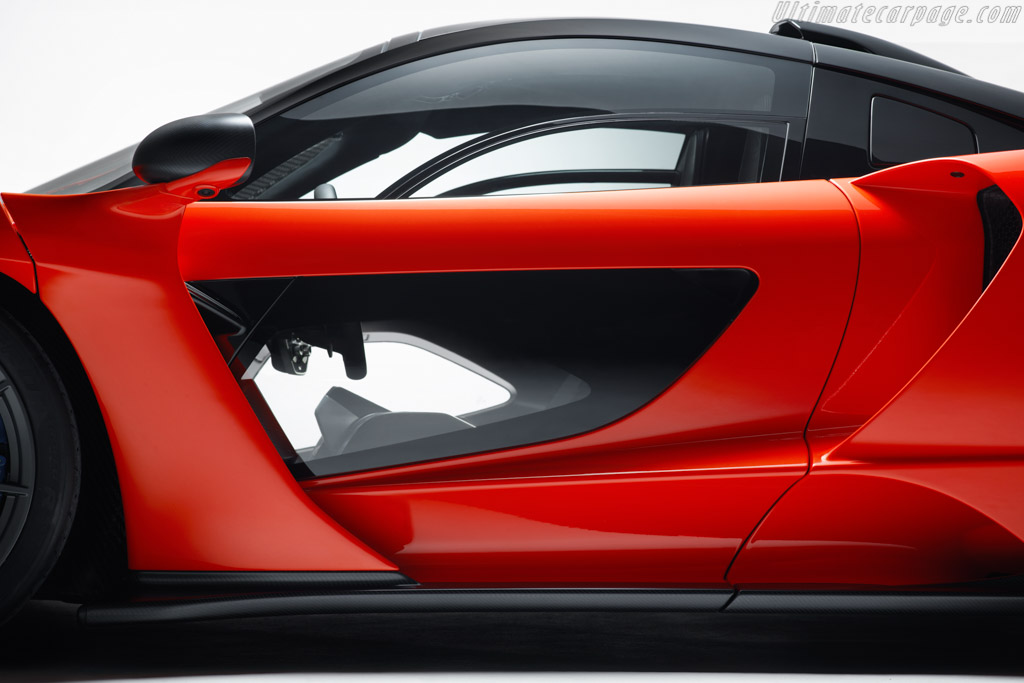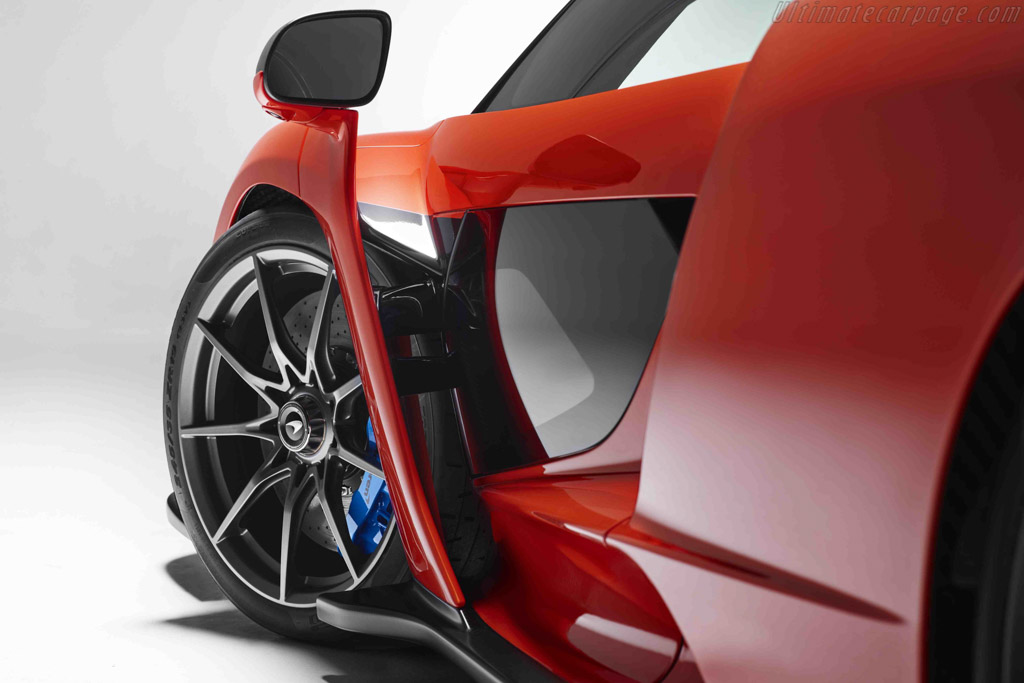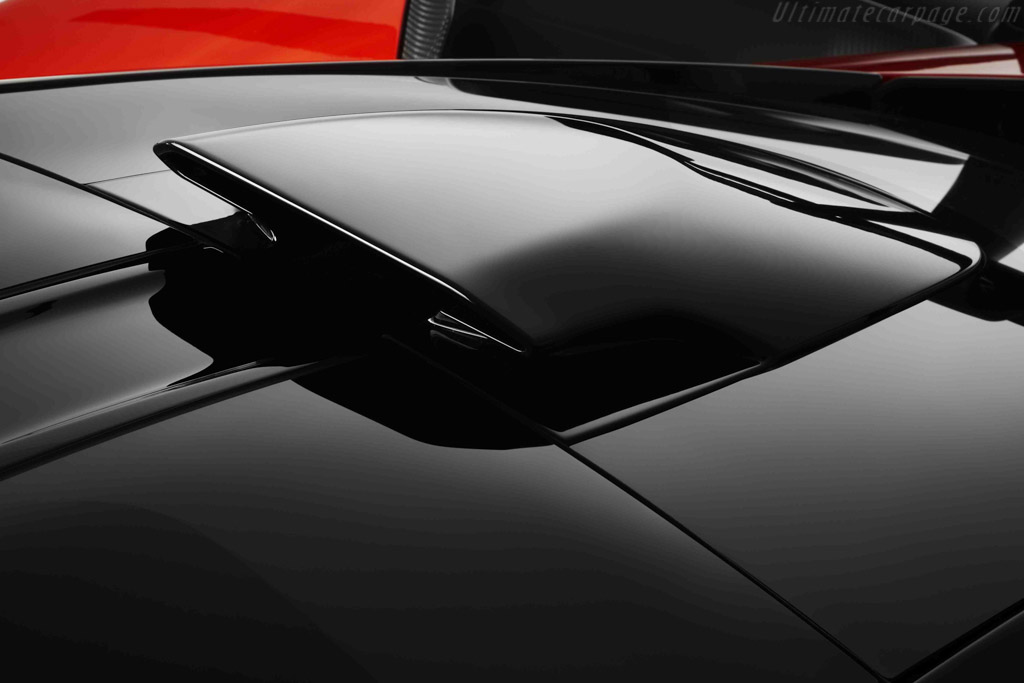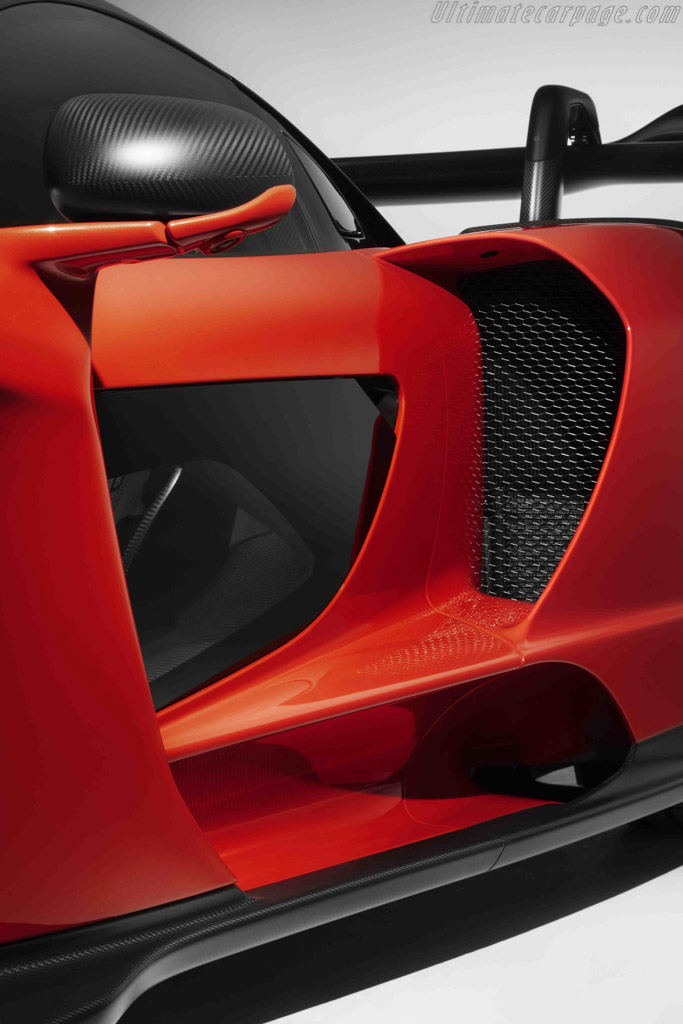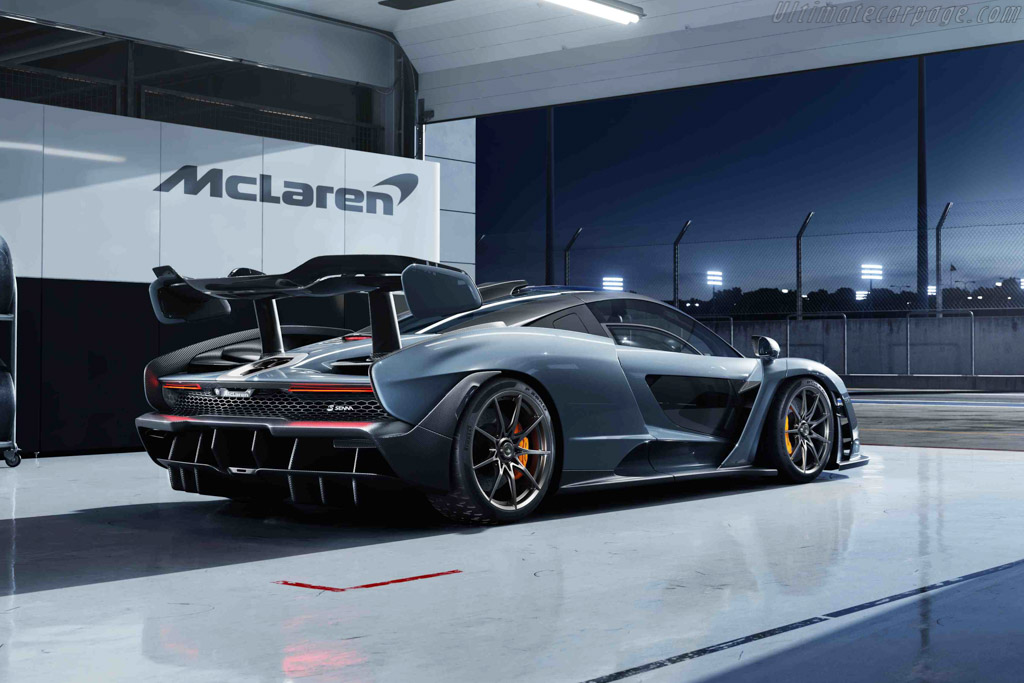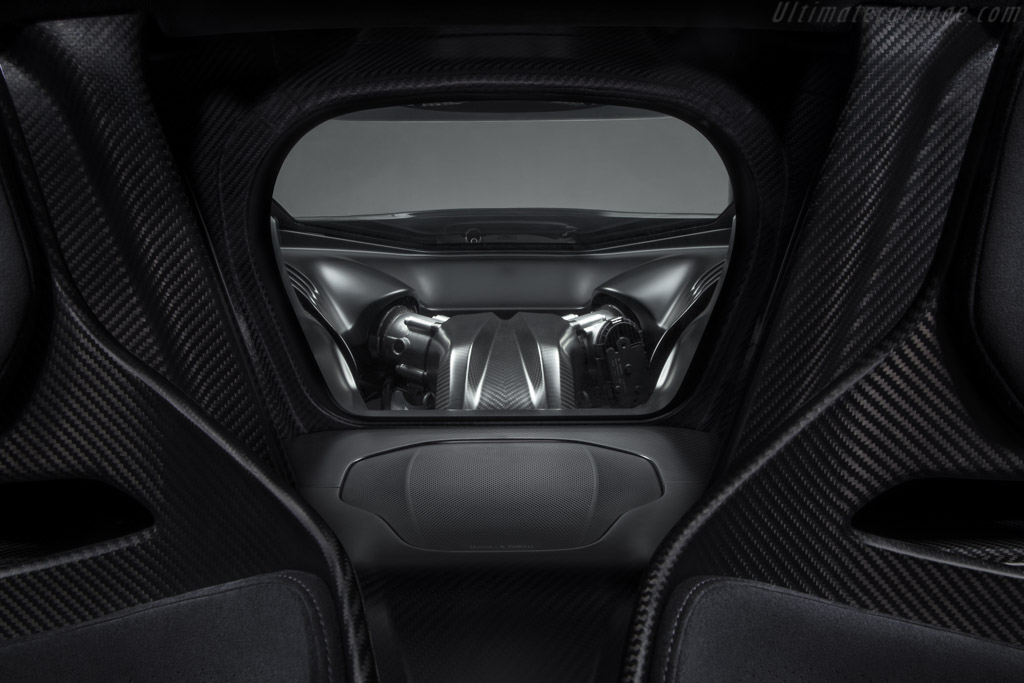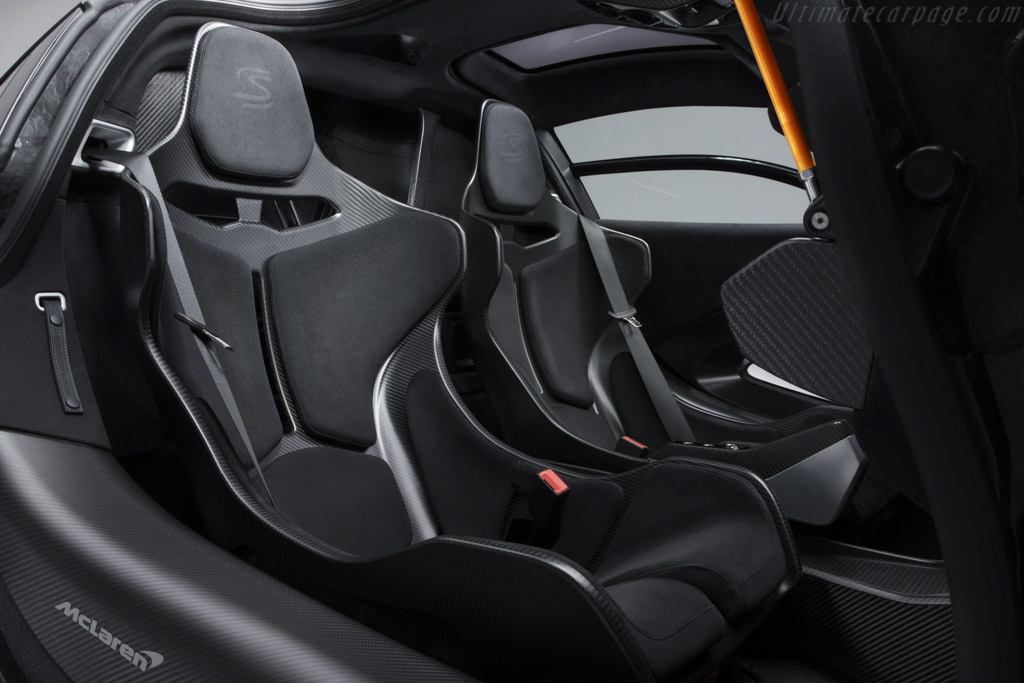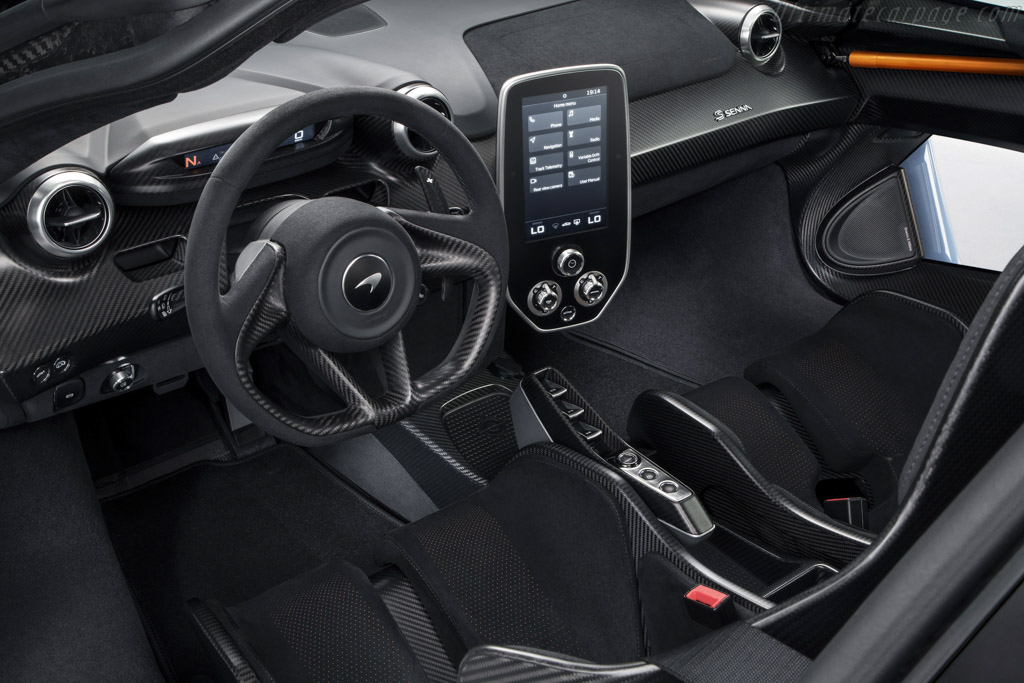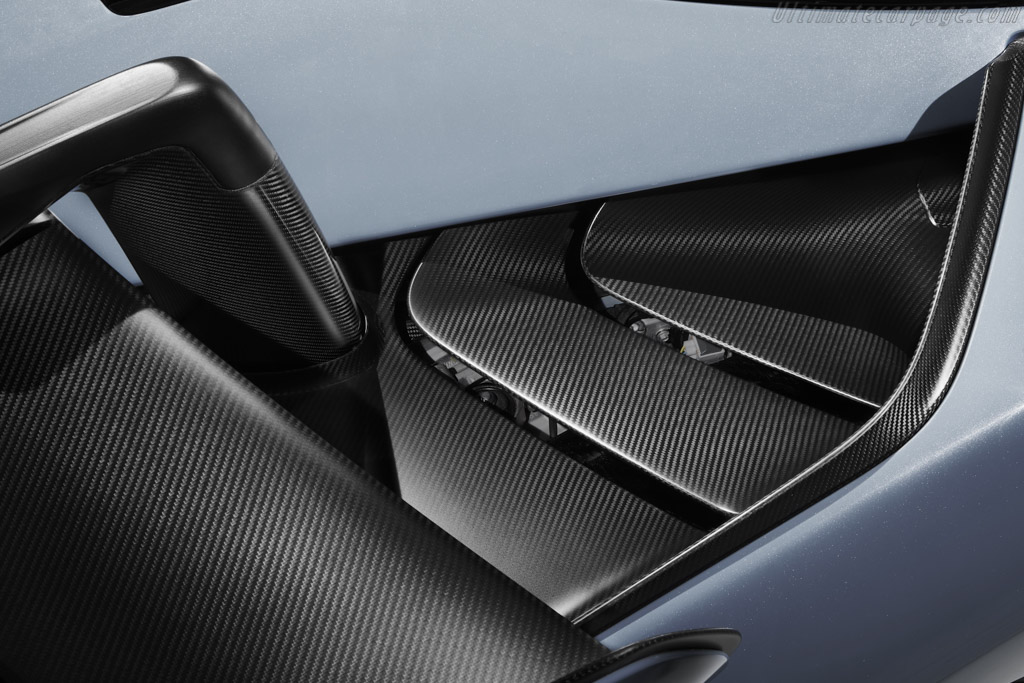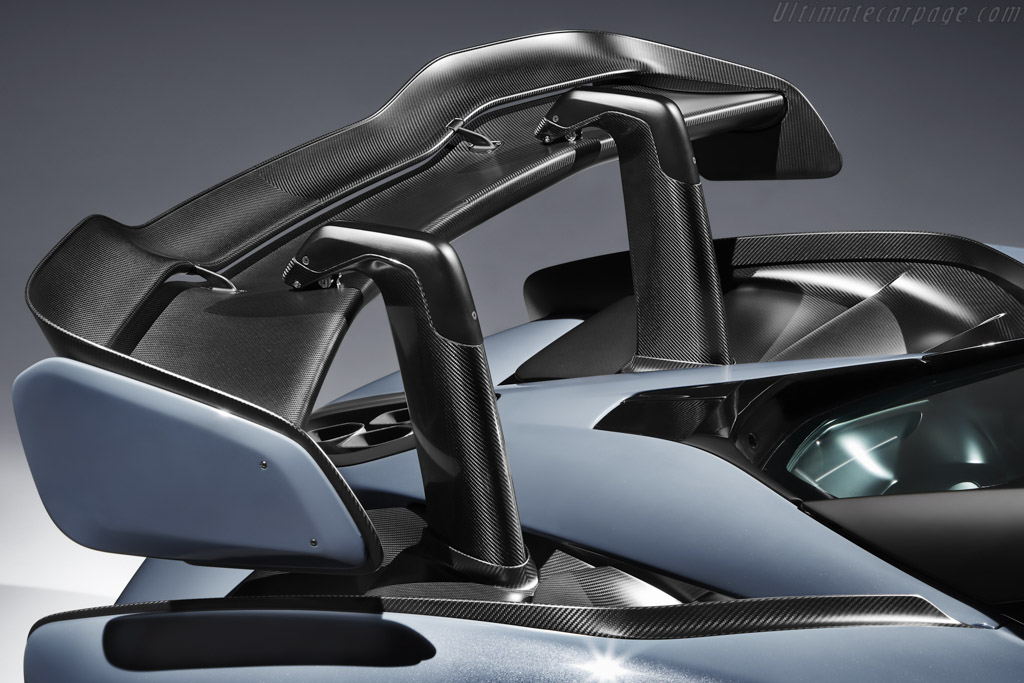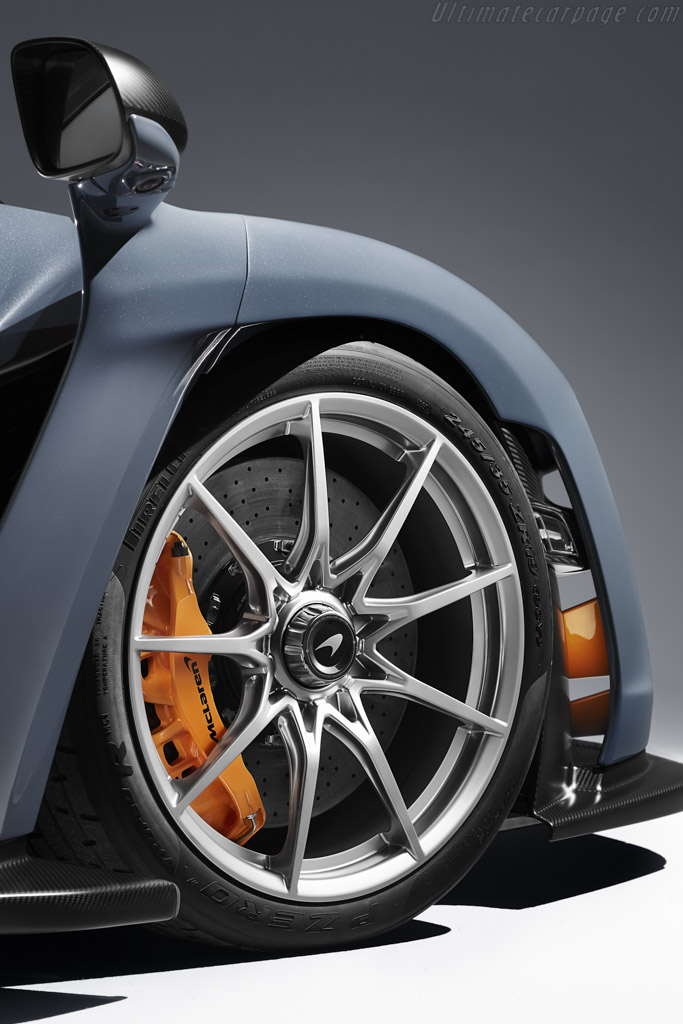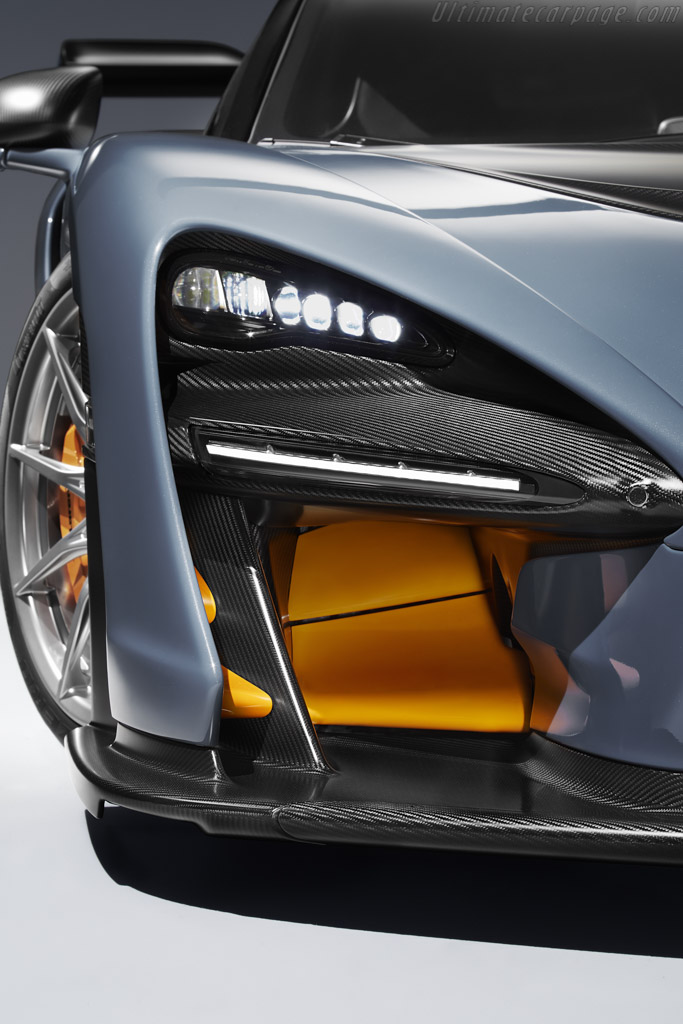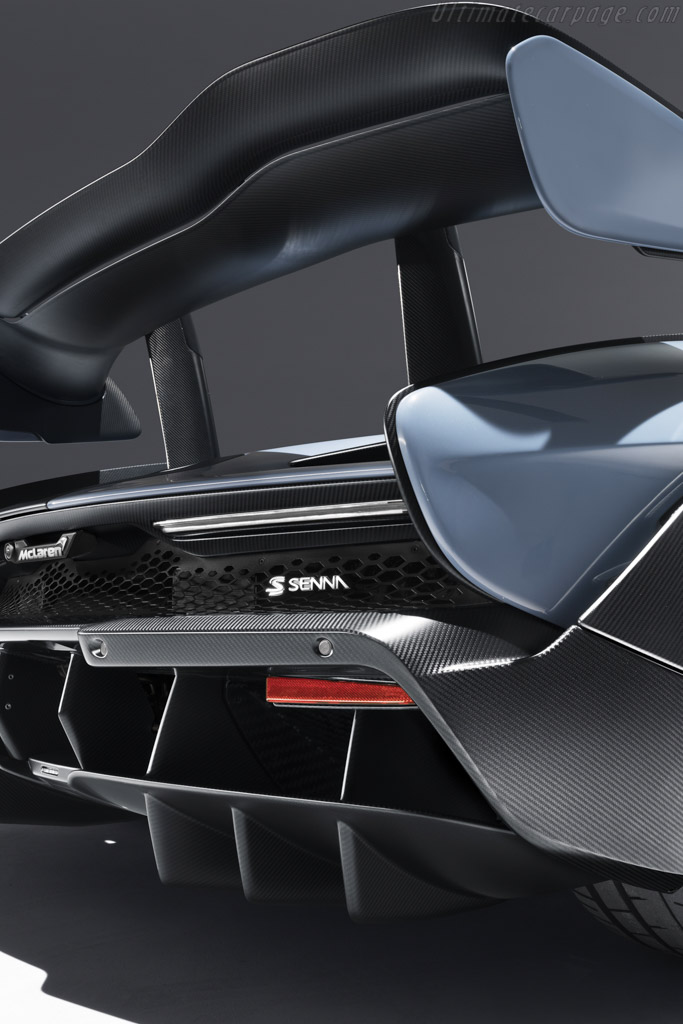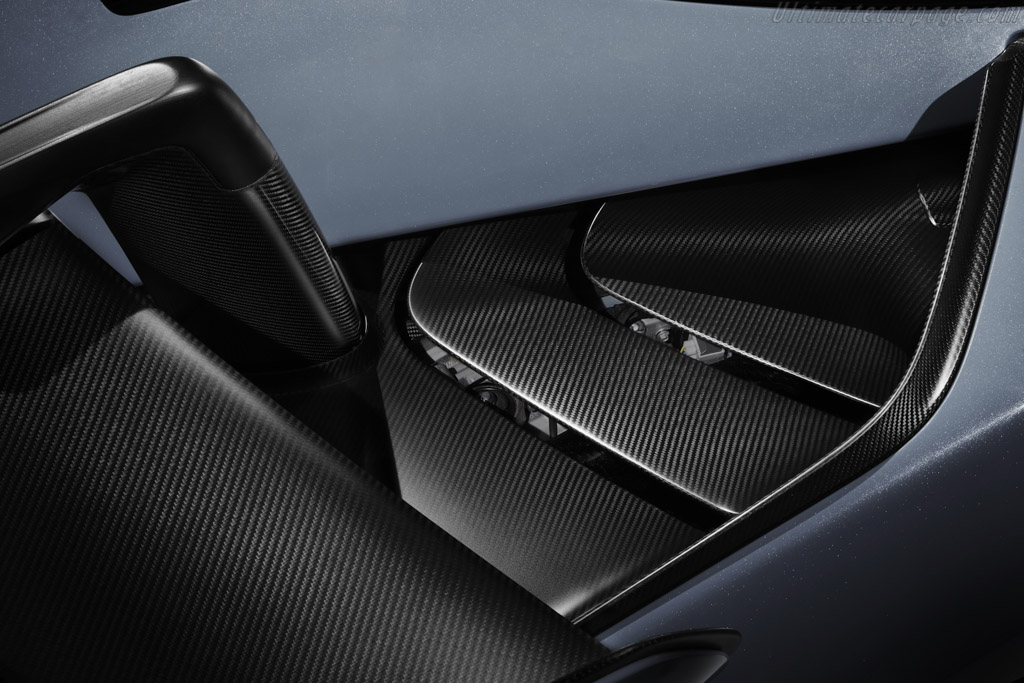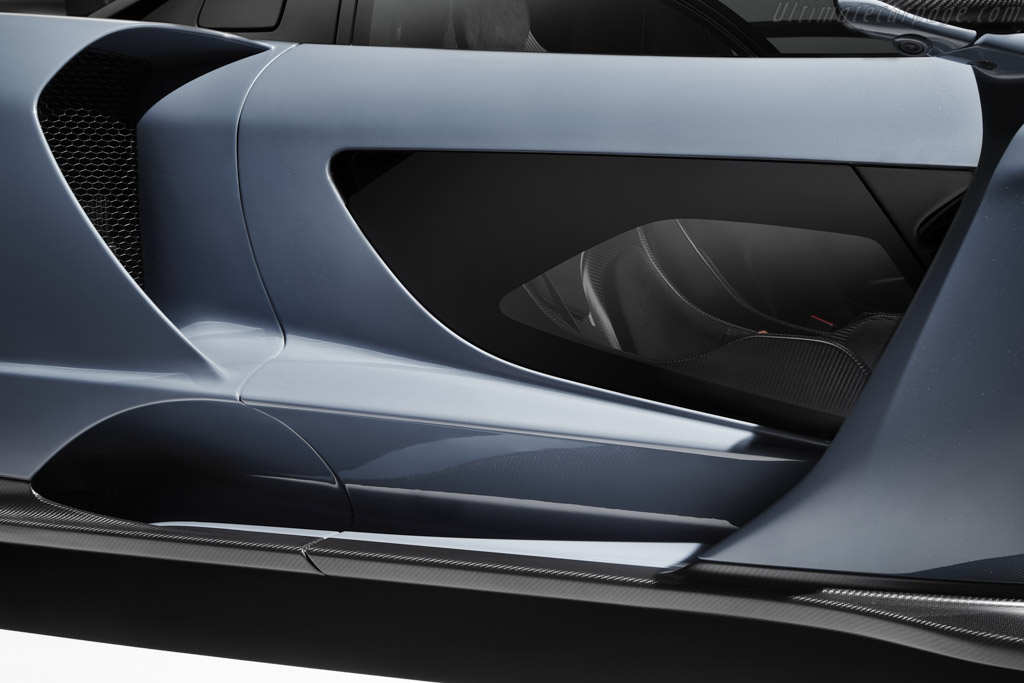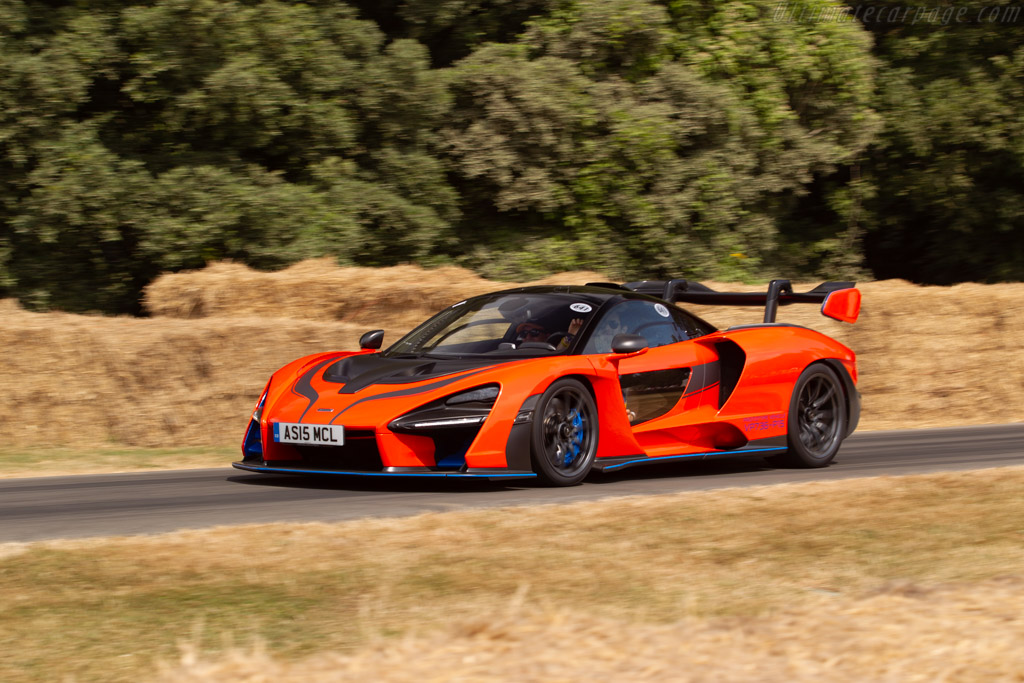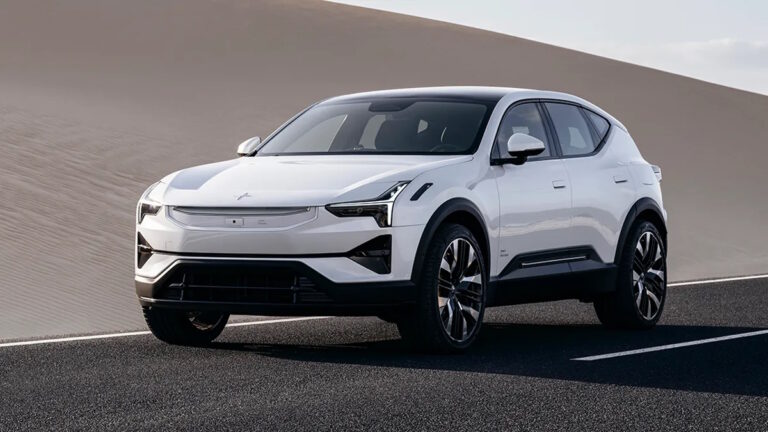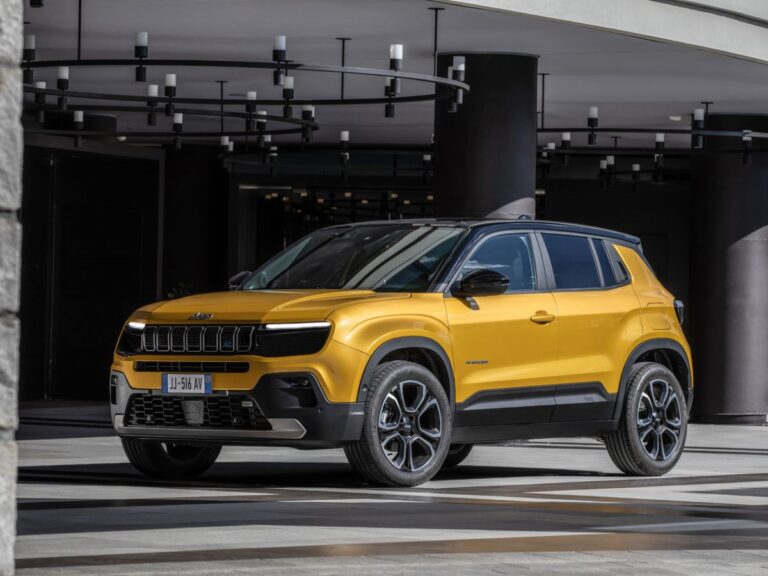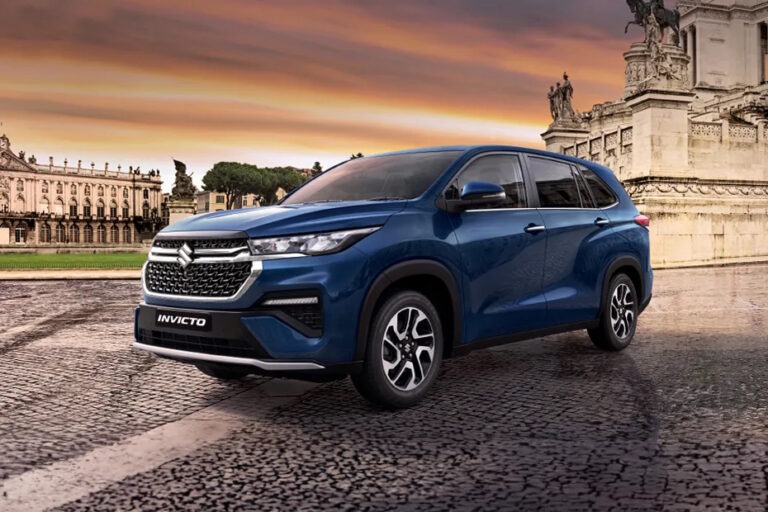Views: 1
Information
The McLaren Senna is a limited-production mid-engined sports car manufactured by McLaren Automotive. The car is the third addition in the McLaren Ultimate Series, joining the F1 and the P1; however, it is not a direct successor to either of the cars. The Senna was unveiled online by the company on 10 December 2017, with the official unveiling taking place at the 2018 Geneva Motor Show.
Nomenclature
The car is named after the Brazilian Formula One race driver Ayrton Senna, honouring and giving tribute to his success with the McLaren Formula One Team between 1988 and 1993 Formula 1 seasons. Senna won three Formula One World Drivers’ Championship titles and thirty-five Formula One Grand Prix race wins with the team; McLaren also won four consecutive Formula One World Constructor’s Championship titles with Senna as part of their driver line-up.
McLaren Automotive holds the rights to the Senna family name along with the Instituto Ayrton Senna. The organisation and McLaren have made the Senna name exclusive to the car, thereby prohibiting any other company from using the name.
Specifications
McLaren’s main focus while designing the Senna was to achieve faster lap times. In order to do so, McLaren developed a lightweight design that incorporated aerodynamic elements.
The Senna is largely based on the McLaren 720S, using a modified version of its carbon fibre monocoque and engine. The Senna is powered by a modified version of the McLaren 720S’ 3,994 cc (4.0 L; 243.7 cu in) twin-turbocharged V8 engine codenamed the M840TR. It utilises a seven-speed dual-clutch transmission that delivers all 800 PS (588 kW; 789 hp) at 7,250 rpm and 590 lb⋅ft (800 N⋅m) of torque at 5,500 rpm to the rear wheels. Unlike the previous offering in the Ultimate Series, the McLaren P1, the Senna does not use an electric motor in favour of its low claimed dry weight of 1,198 kg (2,641 lb), which allows for a maximum power-to-weight ratio of 667 PS (491 kW; 658 hp) per ton.
The car has many aerodynamic elements, there being a large adjustable double-element rear wing (that is operated electronically and has various settings in order to provide optimum performance while also acting as an airbrake), double-element diffuser, Formula One-inspired roof scoop, front and side air intakes, rear air louvres, and large front fenders. Inside the panel beside the intakes is a small set of mini-canards. Areas of low pressure are accompanied using high-performance radiators that ensure improved engine cooling. The car uses dihedral doors, like the previous offerings in the Ultimate Series, and also has optional windows applied on the lower area of its doors.
The Senna uses a new generation of Brembo’s carbon ceramic brakes, containing a compound that has three and a half times better thermal conductivity than before, making the brakes smaller and lighter. It also features a new set of lightweight center-lock alloy wheels designed for Pirelli P-Zero Trofeo R tyres. Its central design is a new generation of McLaren’s carbon fibre monocoque named MonoCage III, which contributes to the car’s relatively low dry weight. The car utilises a top mounted (hot-vee) inconel-titanium exhaust system with three outlet pipes in order for a more aggressive exhaust note and engine emissions. The interior consists largely of exposed carbon fibre and Alcantara, with seats that can be upholstered in Alcantara or leather, depending on the customer’s preference. Behind the two seats is room large enough for two helmets and race suits, reflecting the car’s minimalist and track focused design. The car utilises McLaren’s hydraulic RaceActive Chassis Control II (RCC II) suspension along with double-wishbone control arms.
Performance statistics
Manufacturer claimed figures: In February 2018, McLaren released the full performance statistics of the track-oriented Senna model:
- 0–100 km/h (0–62 mph): 2.8 seconds.
- 0–200 km/h (0–124 mph): 6.8 seconds.
- 0–300 km/h (0–186 mph): 17.5 seconds.
- Standing 1⁄4 mile (402 m): 9.9 seconds.
- Power-to-weight ratio: 659 hp/tonne.
- Top speed: 211 mph (340 km/h) (redline limited).
Independent test (done by Autocar):
- 0–97 km/h (0–60 mph) in 3.1 seconds
- 0–161 km/h (0–100 mph) in 5.5 seconds
- 0–193 km/h (0–120 mph) in 7.1 seconds
- 0–290 km/h (0–180 mph) in 19.8 seconds
- Standing 1/4 mile in 10.4 seconds.
Production
Every car will be hand-built at the McLaren Production Centre in Woking, Surrey, England with a production run of just 500 units, all of which are already sold. The McLaren Senna is listed at a price of £750,000 with the final car auctioned at a price of £1,916,793. Deliveries began in the third quarter of 2018.
McLaren Senna GTR
At the 2018 Geneva Motor Show, McLaren unveiled the concept version of the track-only iteration of the Senna dubbed the Senna GTR. The production Senna GTR utilises a dual-clutch race transmission for faster gear shifts, a revised suspension system and Pirelli racing slicks in order to make it the fastest non-Formula One vehicle McLaren has ever created for faster lap times. The Senna GTR is estimated to produce at least 825 PS (607 kW; 814 hp) from its 4.0 L twin-turbocharged V8 engine and is meant to be faster and more agile than its road-going counterpart. On the exterior, the GTR utilizes wider front and rear fenders, a larger front splitter, new wheels and a bigger rear diffuser in order to make the car generate about 1,000 kg (2,204 lb) of downforce. The Senna GTR will be limited to only 75 examples.
In reviewing the future regulations for the World Endurance Championship, the Fédération Internationale de l’Automobile (FIA) identified the Senna GTR as one of several models that fit their vision of a replacement for the Le Mans Prototype class. It was also a competitor at the 2019 Goodwood Festival of Speed.
McLaren Senna XP
In December 2019, it was revealed that McLaren of Beverly Hills had acquired three development prototypes of the Senna and had commissioned McLaren to convert them to production cars. The three cars celebrate amazing events of Ayrton Senna’s F1 career. All three cars have a gloss black carbon fiber exterior with accents of the flag of the country where the event happened. They also have Ayrton Senna’s car number at the time on the wing endplates.
Master of Monaco
The Master of Monaco celebrates Senna’s six wins at the Monaco F1 Grand Prix. The car has red leather seats with the flag of Monaco embroidered on the head rests, and red carbon fiber interior trim. The number 12 is written on the wing endplates. The car has been owned by rapper Post Malone.
Lap of the Gods
The Lap of the Gods celebrates Senna’s opening lap in the wet at Donnington in 1993 when he drove from fifth place to first in less than a lap. The car has blue leather seats with the UK flag embroidered on the head rests, and blue carbon fiber interior trim. The number 8 is written on the wing endplates.
Home Victory
The Home Victory celebrates Senna’s 1991 victory in Brazil. The cars has green leather seats with the Brazil flag embroidered on the head rests, and green carbon fiber interior trim. The number 1 is written on the wing endplates.
McLaren Senna LM
The McLaren Senna LM is a track-oriented, street-legal variant of the Senna, made by the McLaren Special Operations department. The bodywork remains the same as the standard Senna, but has components from the Senna GTR. The unique orange livery is a homage to the McLaren F1 LM, which itself is made from inspiration to celebrate the winning F1 GTR that won the 1995 Le Mans. The Senna LM also features polished ports and cylinder heads, OZ center-lock wheels with a retro design, satin-gold-tipped quad exhausts, louvers on the front fenders, the removal of the clear panel in the doors from the standard Senna, titanium panels and LM branding. Power of the 4-liter twin-turbo V8 is now up to 814 hp, which matches the Senna GTR. Only 20 units will be produced, with 5 units to the US market.
McLaren Senna GTR LM
McLaren, specifically its Special Operations department, officially unveiled the McLaren Senna GTR LM, the road-legal iteration of the trackday-only Senna GTR, online on September 17, 2020. It is not to be confused with the McLaren Senna LM. Only five units have been made, and each has a unique paint scheme reflecting the five McLaren F1 GTRs at the 1995 24 Hours of Le Mans. All have been sold: two to customers in the US and three in Europe. The cars were made to celebrate the 25th anniversary of McLaren’s win at LeMans. They feature OZ Racing wheels and have the same bodywork as the Senna GTR. Power has been increased to 833 hp, higher than any other Senna variant to date. The redline is also increased from 8250 rpm up to 9000 rpm.
825/1
The first unit of the Senna GTR LM is called the 825/1. This car pays homage to the winning F1 GTR, codenamed the McLaren F1/01R, a.k.a. “The Ueno Clinic car”. The 825/1, like its inspiration, has a one-of-a-kind charcoal-grey paint scheme and even features the various driving lamps from its predecessor.
825/6
The second unit of the Senna GTR LM is called the 825/6. This car reflects the F1 GTR that came in third, codenamed the McLaren F1/06R, a.k.a. “The Harrods car”. The 825/6 has Solar Yellow livery, with the stripe in the middle in Heritage Green.
825/2
The third unit of the Senna GTR LM is the 825/2. This car is based on the F1 GTR that came in fourth, codenamed the McLaren F1/02R, a.k.a. “The Gulf car”. The 825/2’s color scheme is an exact replica of the iconic color Gulf Racing Blue and has Ayrton Senna’s signature recreated on the rear quarter of the body. This is the only vehicle to have the wheels painted orange.
825/7
The fourth unit of the Senna GTR LM is the 825/7. This car is a tribute to the F1 GTR that finished in fifth place, codenamed the McLaren F1/07R, a.k.a. “The Jacadi car”. The 825/7 has a royal blue livery with the logos of Elf, a French oil company that sponsored the Giroix Racing Team that ran the car.
825/5
The fifth and last unit of the Senna GTR LM is the 825/5. This example pays homage to the F1 GTR that came in thirteenth, codenamed the McLaren F1/05R. The 825/5 took the longest time out of all the vehicles to paint as it uses extensive airbrushing to include lap times and Le Mans branding cues.
McLaren Sabre
In December 2020, McLaren unveiled the Sabre, a car exclusively made for the US market. The car was developed by MSO and only 15 cars will be produced. The non-hybrid twin-turbocharged 4.0-liter V8 engine is now rated at 824 hp and the car’s top speed is 218 mph. McLaren claims the Sabre to be the fastest two-seat McLaren when it came out as the McLaren F1 and McLaren Speedtail both have three seats.
In media
- The McLaren Senna is featured both on the cover and as a drivable vehicle in the racing videogame Forza Horizon 4 and was added in the April 2019 “Easter Update” for Forza Motorsport 7. A Lego Speed Champions version of the car exists and in featured in Forza Horizon 4’s Lego Speed Champions expansion where it is slightly faster than the base version. It is also available to drive in the racing videogame Real Racing 3, added in March 2020’s “McLaren Senna Update”.
- Additionally, the Senna was featured in a segment of The Grand Tour. It was reviewed by Jeremy Clarkson who described it as having “rewritten the supercar rule book”. The car also posted a 1:12.9 second lap time around the Grand Tour test track, the Eboladrome, the fastest time to date. However, the vehicle does not appear in The Grand Tour Game due to licensing issues.
- The car is parodied in GTA V’s multiplayer appendage Grand Theft Auto Online as the “Progen Emerus”; Progen is the in-game parody of McLaren. The GTA V Progen Emerus features a different design, including headlights from the Ferrari FXX-K, a spoiler from the McLaren P1 GTR, and the McLaren Speedtail’s body.
- The Senna also appears in Asphalt 9: Legends, added in July 2019’s “Tune It Up Update” as a blueprint-buildable car requiring 45 blueprints to unlock. It also appears as a high-end class S car.
- The car also appears in Asphalt 8: Airborne, added in January 2020’s “2020 Lunar New Year Update”, along with three other cars: the Infiniti Project Black S Special Edition, the Lotus Evija, and the Drako GTE. It appears again as a high-end class S car, and as a festival-obtainable car, Tier 8 is required to unlock it.

